Aurea Biolabs has released early clinical study data on its potent anti-inflammatory ingredient, Rephyll, showing decreased fatigue, inflammation, oxygen requirements, and lactic acid with increased ATP reserves.[1] PricePlow got an early look at the data, so this article recaps the ingredient and summarizes the data.
A growing body of scientific evidence shows that your body's cannabinoid system plays an important role in regulating mood, pain tolerance, sleep quality, cognitive performance, appetite regulation, and circulatory health. Cannabinoids are also important for the famous runner's high that we experience following exercise.[2]
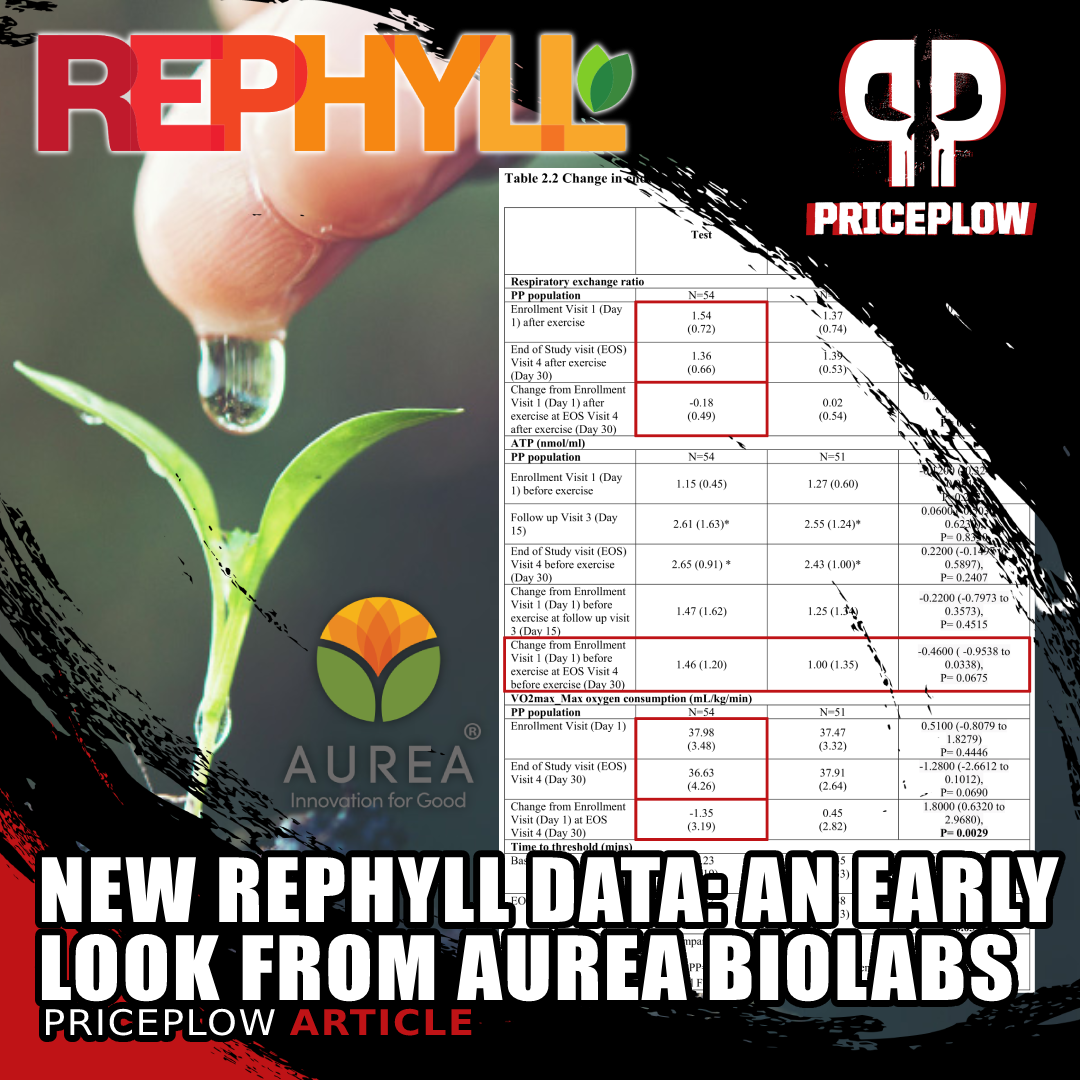
Aurea Biolabs has provided PricePlow with an exclusive early look at some new data on their pain management phytocannabinoid ingredient, Rephyll, which is sourced from black pepper
In order to regulate these mechanisms, the body produces endocannabinoids, which are, as their name suggests, endogenously produced cannabinoids.[2] However, exogenous (external) cannabinoids can stimulate the same receptors as endocannabinoids – the most notable example being the cannabis plant.
Unfortunately, cannabinoids have gotten a bad rap over the years thanks to their association with this plant, and the culture that surrounds it. However, as the research on cannabinoid and endocannabinoid benefits continues to mount, we're seeing a shift in attitudes toward cannabinoids. It turns out that these compounds can be profoundly useful for certain legitimate purposes.
To understand how, we need to talk about the constitution of the cannabinoid system. There are two types of cannabinoid receptor, cannabinoid receptor type 1 (CB1) and cannabinoid receptor type 2 (CB2).[3] CB1 produces most of the psychoactive effects associated with cannabinoids like tetrahydrocannabinol (THC), while CB2 is associated with anti-inflammatory and immunomodulatory actions.[3]
It's this CB2 receptor that dietary supplement companies are learning to better target, providing some incredible effects to combat excessive inflammation. Today we dive into one such ingredient:
Aurea's Rephyll: Anti-Inflammatory CB2 Agonist
Rephyll is a form of β-caryophyllene (BCP), a sesquiterpene sourced from curcumin and black pepper extracts, that's been formulated in a plant-based carrier by Aurea BioLabs. By activating the CB2 receptor,[4] β-caryophyllene (and thus Rephyll) can decrease the level of systemic inflammation in the body.[5] Because of this effect, CB2 has been proposed as a therapeutic target to support the maintenance of healthy inflammation levels.[5]
One double-blind, randomized, placebo-controlled study found that Rephyll can reduce the intensity of delayed-onset muscle soreness (DOMS) after strenuous exercise.[6]
The same study found that it can also improve muscular strength and flexibility, an effect that seems to stem from its anti-inflammatory action.[6] Rephyll also seems to improve the circulation of fluids in muscle tissue, which can positively affect recovery from exercise.
New Incoming Data: Rephyll Improves Multiple Aspects of DOMS
Early data from a new study performed in 2023 has shown that Rephyll can help manage symptoms of DOMS. Below, we take a first look at this data to see what we can learn before it's peer-reviewed and published.
In this trial, researchers evaluated Rephyll's ability to improve the following DOMS-related aspects of post-exercise recovery:

This article was posted in proud partnership with Aurea Biolabs, who allowed us to release the data early.
- Muscle fatigue (measured by EMG)
- Endurance energy supply
- Neuromuscular activation (measured by EMG)
- Stress and anti-inflammatory biomarkers
- Blood pressure and pulse
- White blood cell count (CBC) and blood lipids
- Subjective pain
What we're looking for here is a restoration to baseline. In the perfect world, following exercise, Rephyll could completely reverse the deficits typically seen in each of these categories. In other words, Rephyll improving DOMS would mean it's accelerating recovery from exercise.
Methodology
The first thing to note about this study is that it's randomized, placebo-controlled, and double-blind. That's the gold standard study design.
Subjects were randomized to receive either 500 milligrams of Rephyll or 500 milligrams of placebo daily, 30 minutes before breakfast. The study period lasted for 30 days, with the researchers collecting key data at the beginning and end of that period.
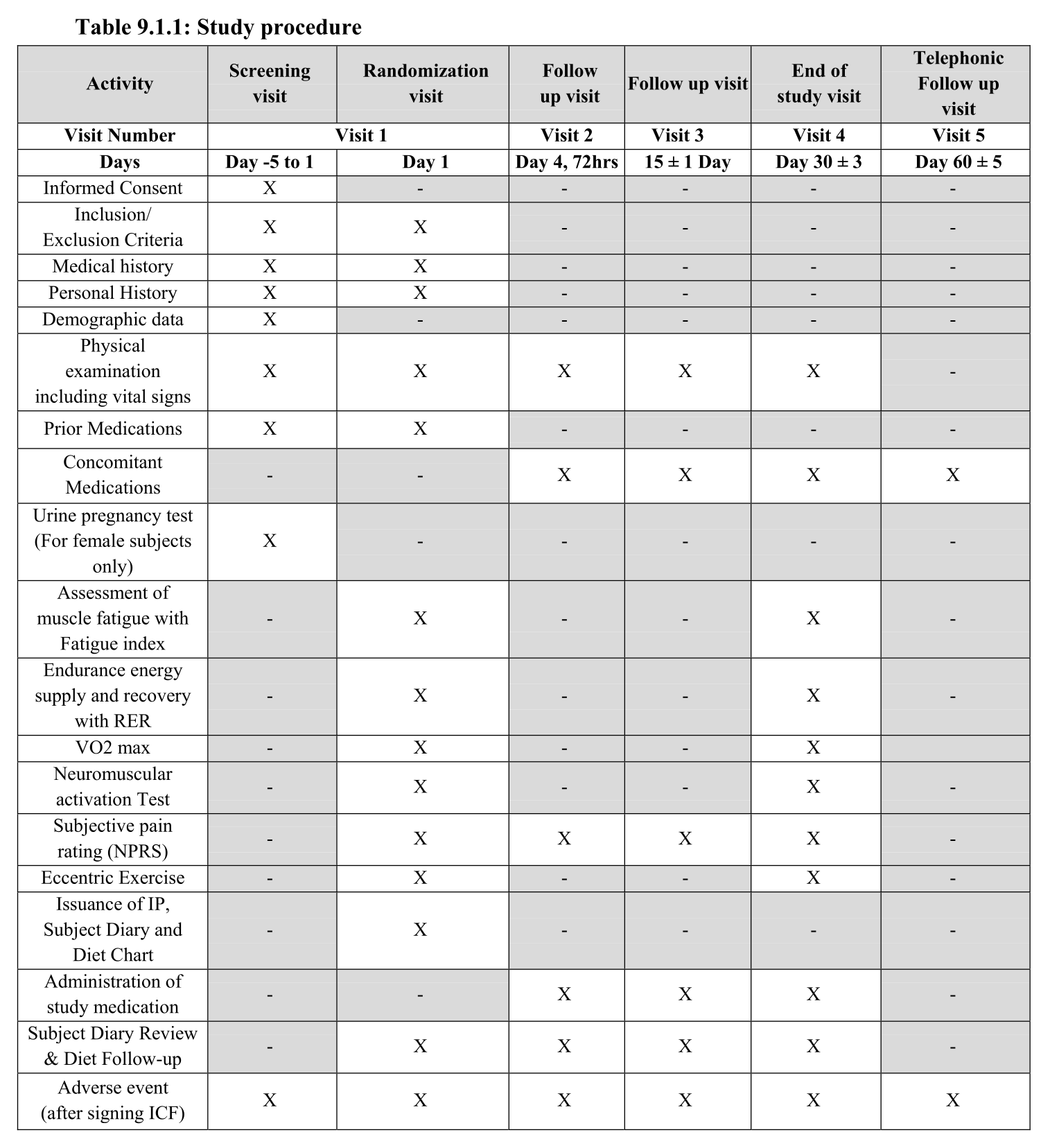
A table showing the complete study methodology. Note that the eccentric exercise test was performed on days 1 and 30.[1]
Participants visited the study lab on four separate occasions. The researchers collected data on each visit, and you can see the collection schedule for each data type in the inset table. The really important thing to note here is that the exercise performance test was performed on the first visit (visit 1) and the final visit (visit 4).[1] Naturally, the data most directly relevant to DOMS and recovery were collected immediately after these two tests.
Exercise test composition
The test administered on days 1 and 30 (visits 1 and 4, respectively) consisted of three eccentric exercises:
- Calf raises
- Hamstring curls
- Lying hip lifts (targets adductors)
- Decline board knee bends (targets quadriceps)
Four repetitions of each exercise were performed for the two testing days.
-
Muscle fatigue
In order to assess Rephyll's effects on muscular fatigue, the researchers used the fatigue index, as measured by electromyography (EMG).[1] The EMG measures electrical activity in muscle tissue, which is taken as a proxy for muscular activity.
Remember that here, a higher EMG score is better. Even though it's referred to as the fatigue index, what's being measured is muscle activity, so a higher number indicates less fatigue.[1]
Compared to the placebo group, the Rephyll group had significantly higher levels of muscle activity following intense exercise.[1]
The EMG readings from this study indicate that the Rephyll group had a significant muscle fatigue advantage over the placebo group. Recall that these readings were taken immediately after the exercise test on visits 1 and 4,[1] so the Rephyll group's significant rise in EMG score means they were less fatigued after the second exercise test than they were after the first.[1]
You can also see from the table that rated perceived exertion (RPE) scores, a subjective measure of exercise difficulty, were also lower in the Rephyll group.[1]
-
Endurance Energy Supply and Recovery
Muscular and aerobic endurance are key factors in athletic performance and recovery. In order to assess Rephyll's effects on these, the researchers looked at three key indices:
- Respiratory exchange ratio – ratio of CO2 produced to O2 consumed during exercise. Lower is better.
- Adenosine triphosphate (ATP) levels – ATP is your body's energy currency, the energy consumed by your cells to perform all your body's metabolic functions. This includes muscle contraction, which is why ATP boosters like creatine can help improve athletic performance.
- VO2 max – the maximum amount of oxygen consumed during the exercise test.
- Lactic acid threshold in blood – lactic acid accumulation produces muscular fatigue, so the less we have, the better.
The Rephyll group improved much more than the placebo group on multiple measures of cardiometabolic function during the final exercise test.[1]
You can see from the study data that the Rephyll group had a lower respiratory exchange ratio than the placebo group during the second exercise test. This indicates better aerobic function, as CO2 is cleared and O2 consumed, more efficiently.[1]
They also had a 46% higher reserve of ATP compared to the placebo group following the second exercise test.[1]
The Rephyll group also had a lower level of oxygen consumption than the placebo group during the second exercise test. While this might sound like a bad thing, the study authors point out that it indicates the Rephyll group performed the same exercise while utilizing less oxygen. This, again, points to an increase in aerobic efficiency.[1]
By the end of the study period, the Rephyll group had significantly less lactic acid in their blood, on average, when measured at the last time point during the final exercise test.[1]
Finally, we can see that compared to the placebo group, the Rephyll group's lactic acid concentration increased much less during the second exercise test. The data shows that at the first time point during the test, the Rephyll group actually had a higher level of lactic acid but by the end, they had a much lower level: 6.78 nmol/l vs. 7.58 nmol/l.[1]
This indicates that Rephyll can help improve the body's clearance of lactic acid during exercise, which helps explain its endurance-boosting effect.[1]
-
Blood Pressure and Pulse Rate
No significant differences were observed between the Rephyll and placebo groups.[1]
-
CBC and Blood Lipids
No significant differences were observed between the Rephyll and placebo groups.[1]
-
Subjective Pain / Pain Reduction
There was statistically significant improvement in pain reduction between test and placebo not only after the 30 days of treatment, but also on days 4 and 15. This suggests Rephyll works quickly -- perhaps not immediately (that's to be determined), but significant pain reduction in less than a week using a natural compound is groundbreaking.
Interpreting These Results – How Should We Use Rephyll?
The design of this study is pretty straightforward, but you should keep one important thing in mind: The participants took Rephyll immediately before both exercise tests. Note, however, there was relatively little difference between the Rephyll group and the placebo group following the first test.
Rephyll's benefits are cumulative
This probably means Rephyll's effects are cumulative, rather than acute. So, before you see the maximum benefit, you'll want to consider taking it for an extended period of time. The study in question tells us that 30 days is a long enough period of time for Rephyll to work. Longer or shorter treatment durations may be equally or more effective, but we don't have the research to say for sure. Needless to say, significant pain reduction at the 4-day mark is very exciting.
As always, we'll need more data to find out.
Conclusion: Rephyll is an Impressive Cannabinoid-Targeting Ingredient
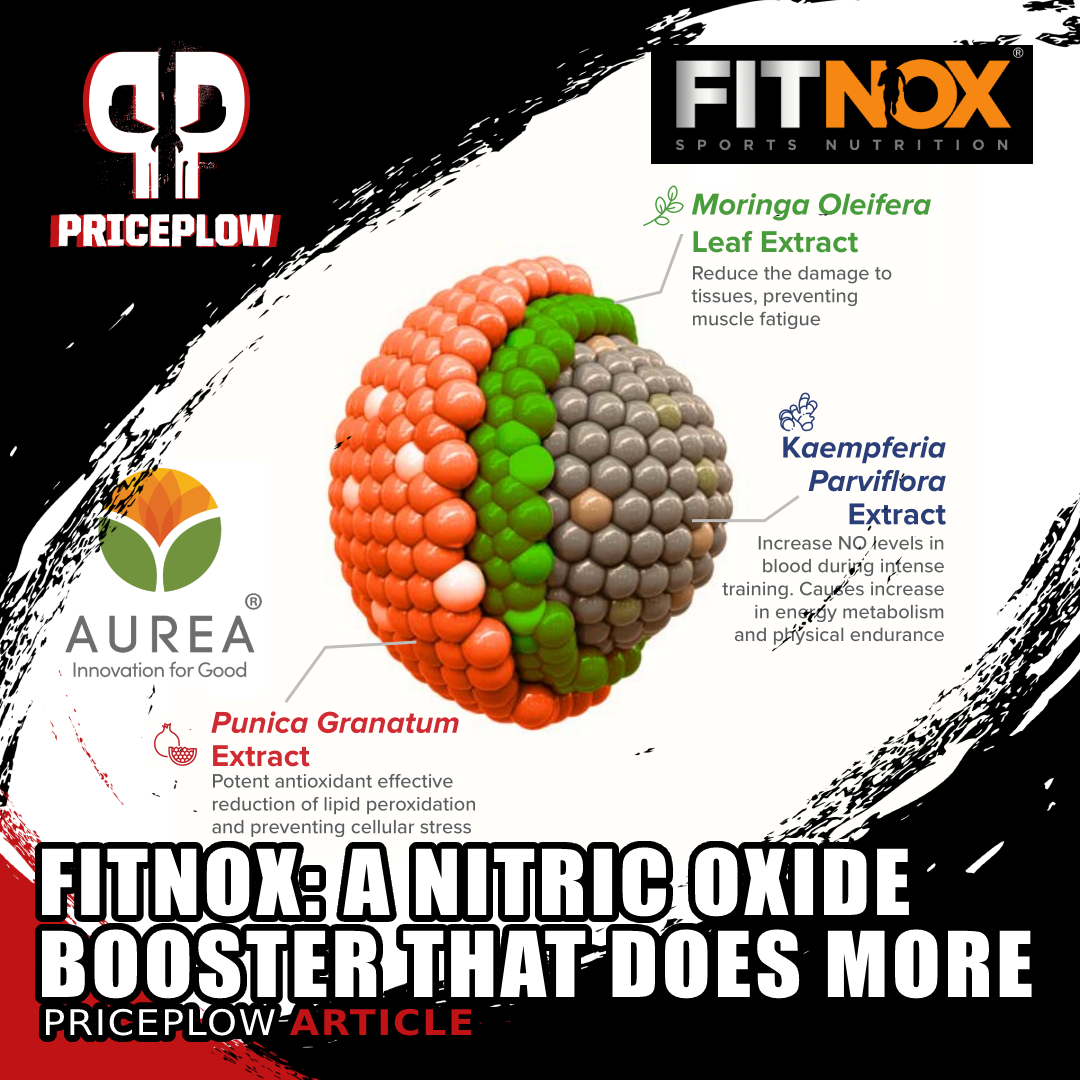
You can also see our coverage of Fitnox, a patented dietary supplement ingredient from Aurea Biolabs that's made from three botanical sources that's great at facilitating nitric oxide production.
Although the endocannabinoid system is typically thought of as being responsible for the temporary post-workout euphoria we call the runner's high,[7,8] research is mounting that its effects go way beyond an elevation in mood. Endocannabinoids also appear to regulate brain plasticity, learning and memory, neuronal development, nociception, inflammation, appetite regulation, digestion, metabolism, energy balance, and motility.[9,10]
These are wide-ranging effects, which implies that endocannabinoids may actually help drive the body's physiological adaptation to exercise. Rephyll's ability to improve athletic performance by acting on the CB2 receptor, as demonstrated in the study we just dissected, is yet another data point in favor of this hypothesis.
To learn more as it comes, you can sign up for our Rephyll news alerts on PricePlow below. If you're looking for a potent natural pain support supplement, see Glaxon Grit, which has 500 milligrams of Rephyll.
Subscribe to PricePlow's Newsletter and Alerts on These Topics
Glaxon GRIT – Deals and Price Drop Alerts
Get Price Alerts
No spam, no scams.
Disclosure: PricePlow relies on pricing from stores with which we have a business relationship. We work hard to keep pricing current, but you may find a better offer.
Posts are sponsored in part by the retailers and/or brands listed on this page.


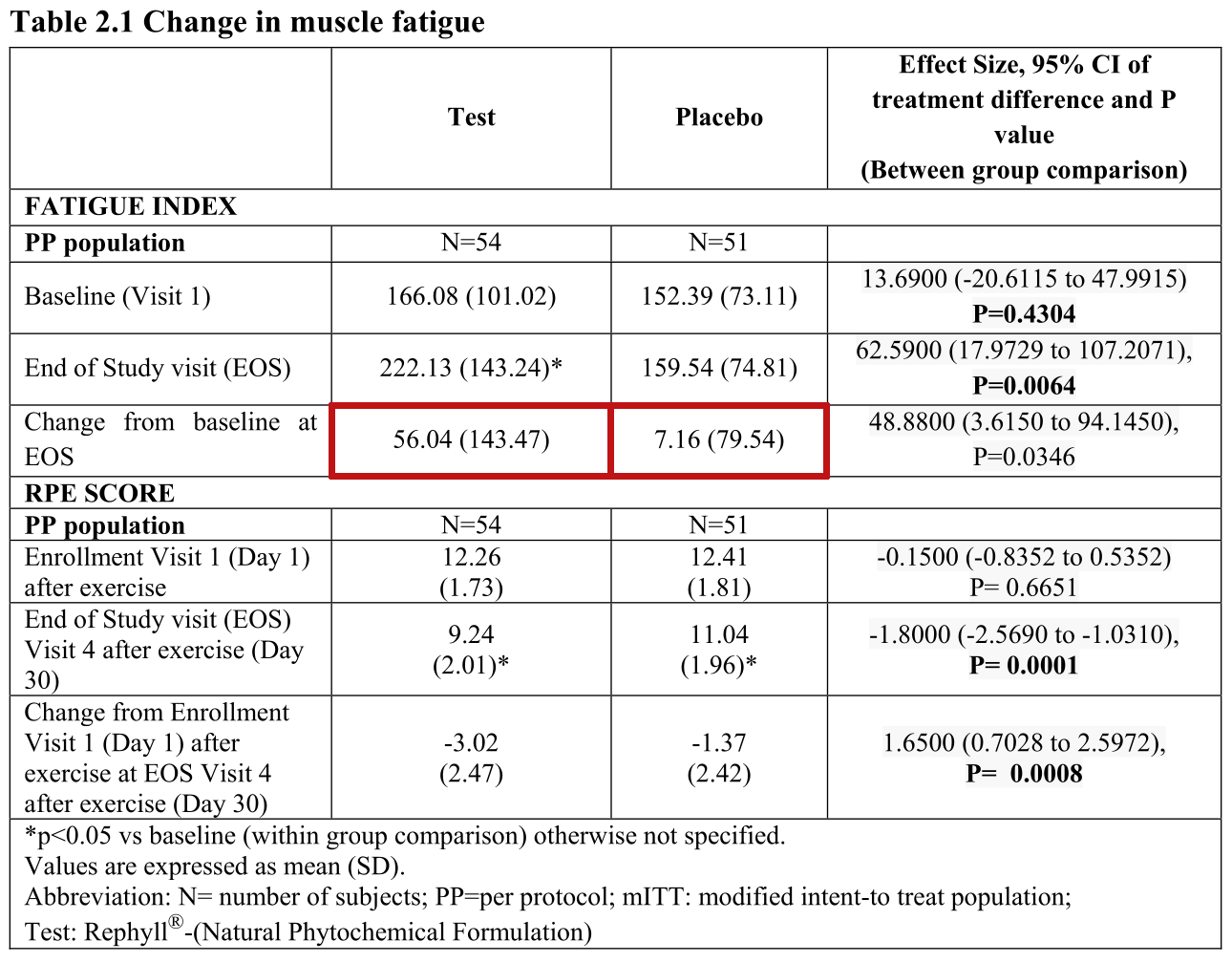
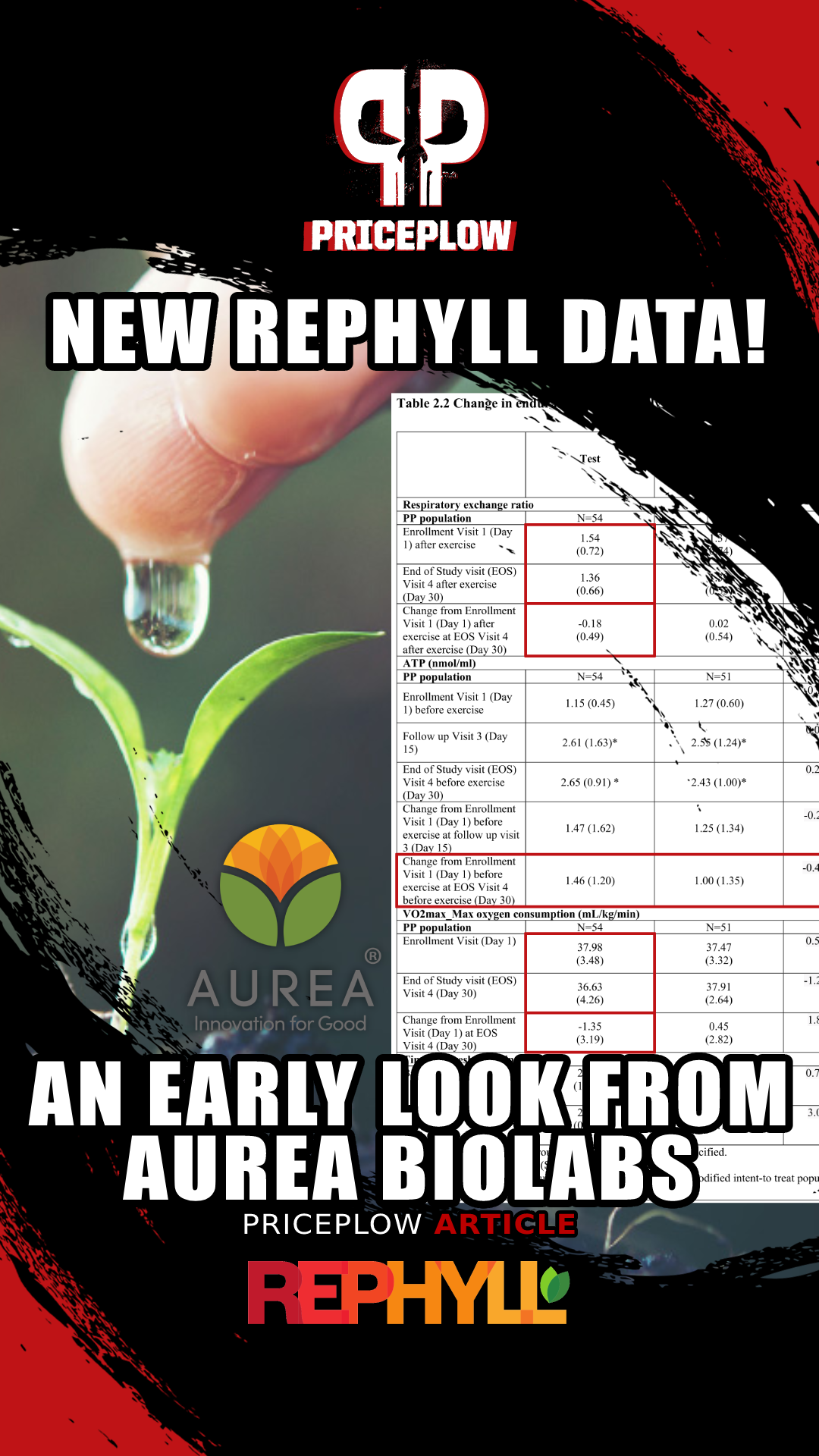
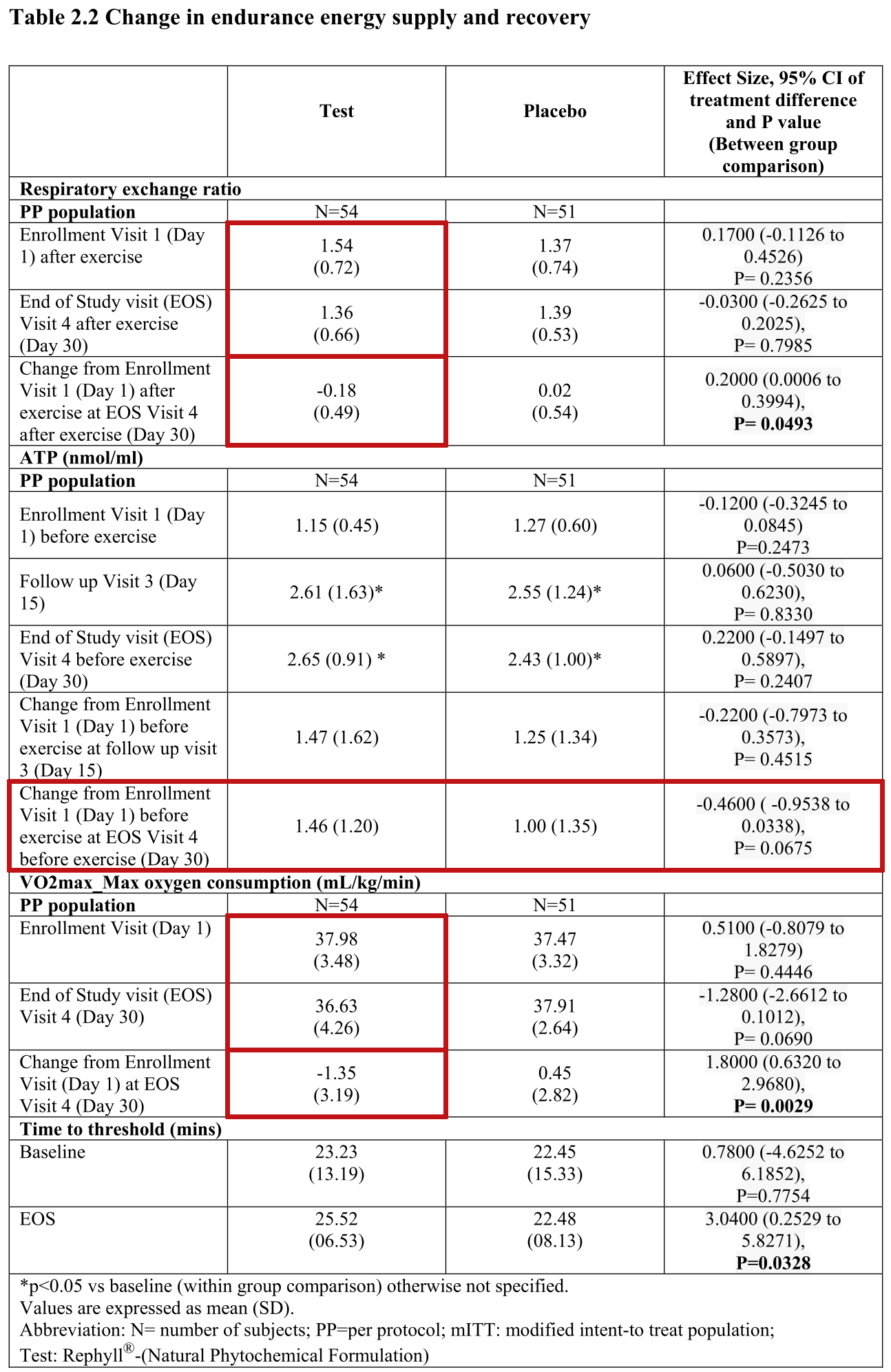
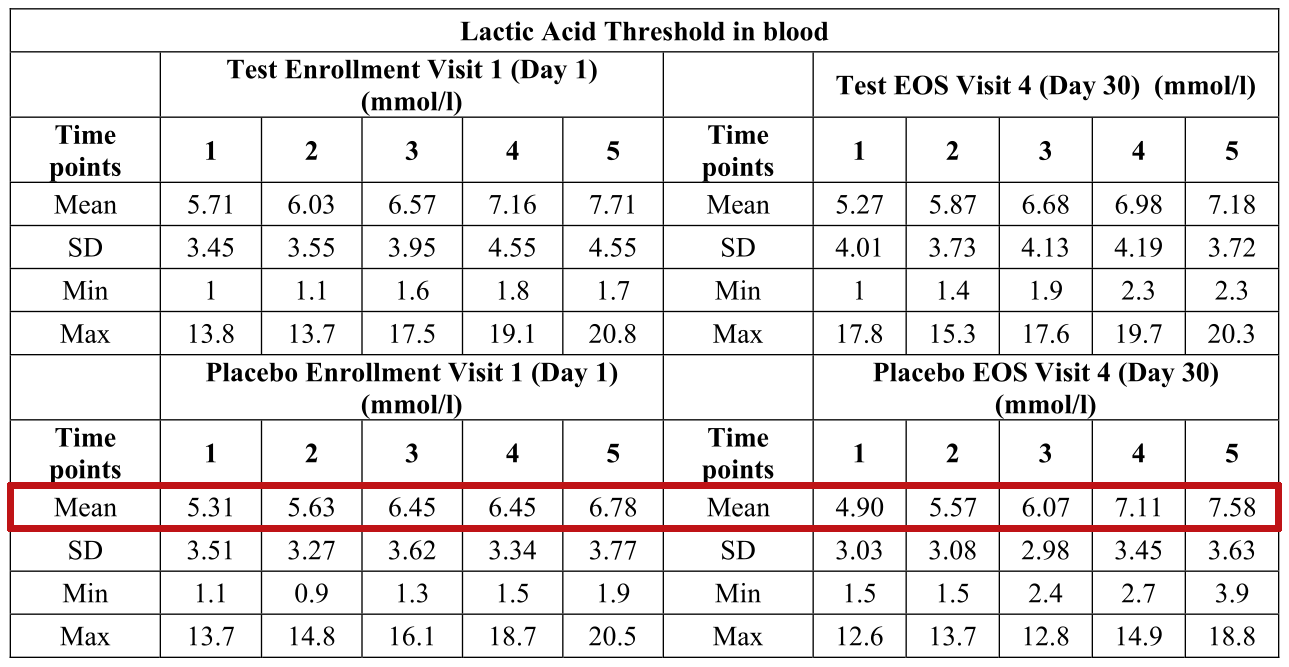
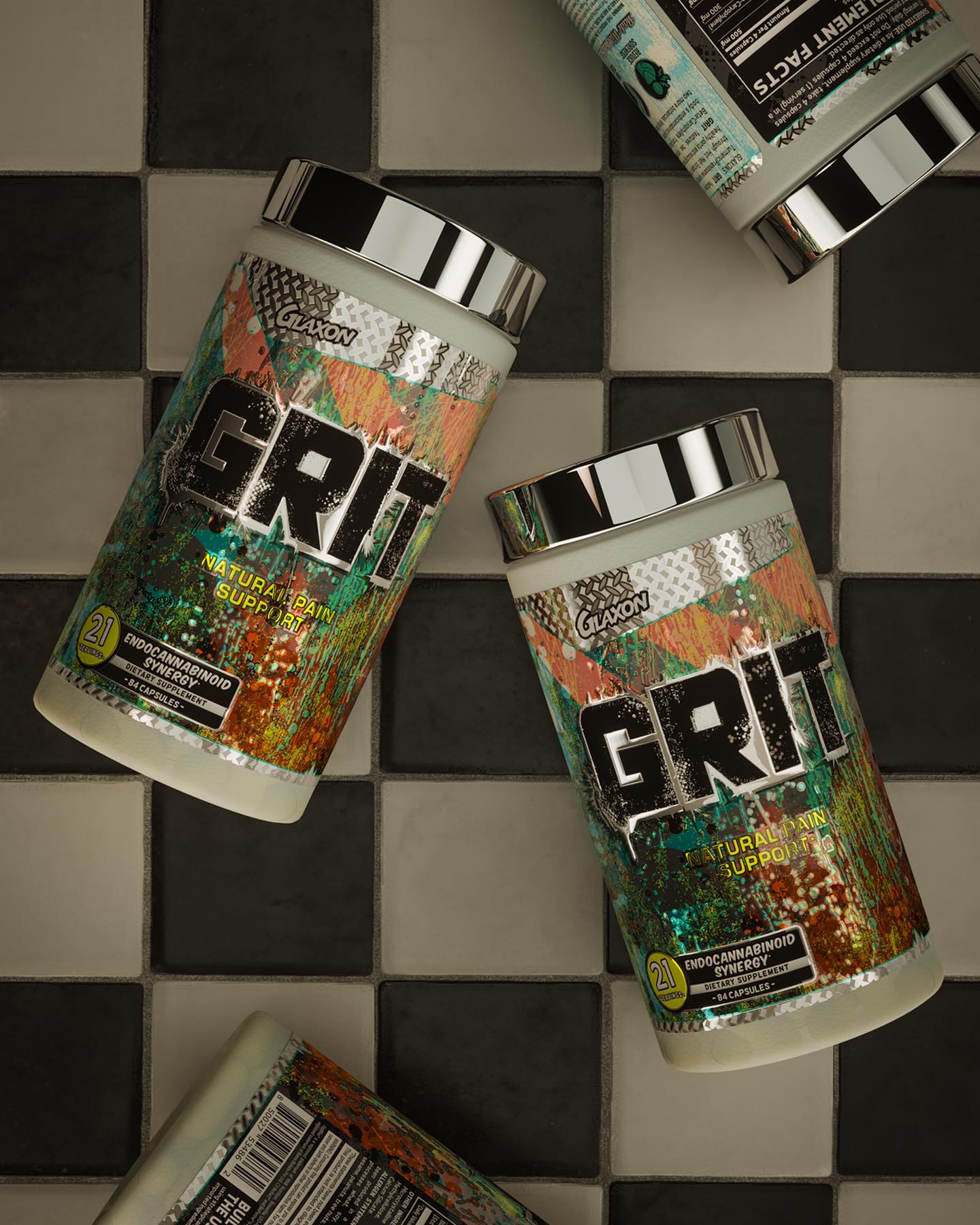



Comments and Discussion (Powered by the PricePlow Forum)